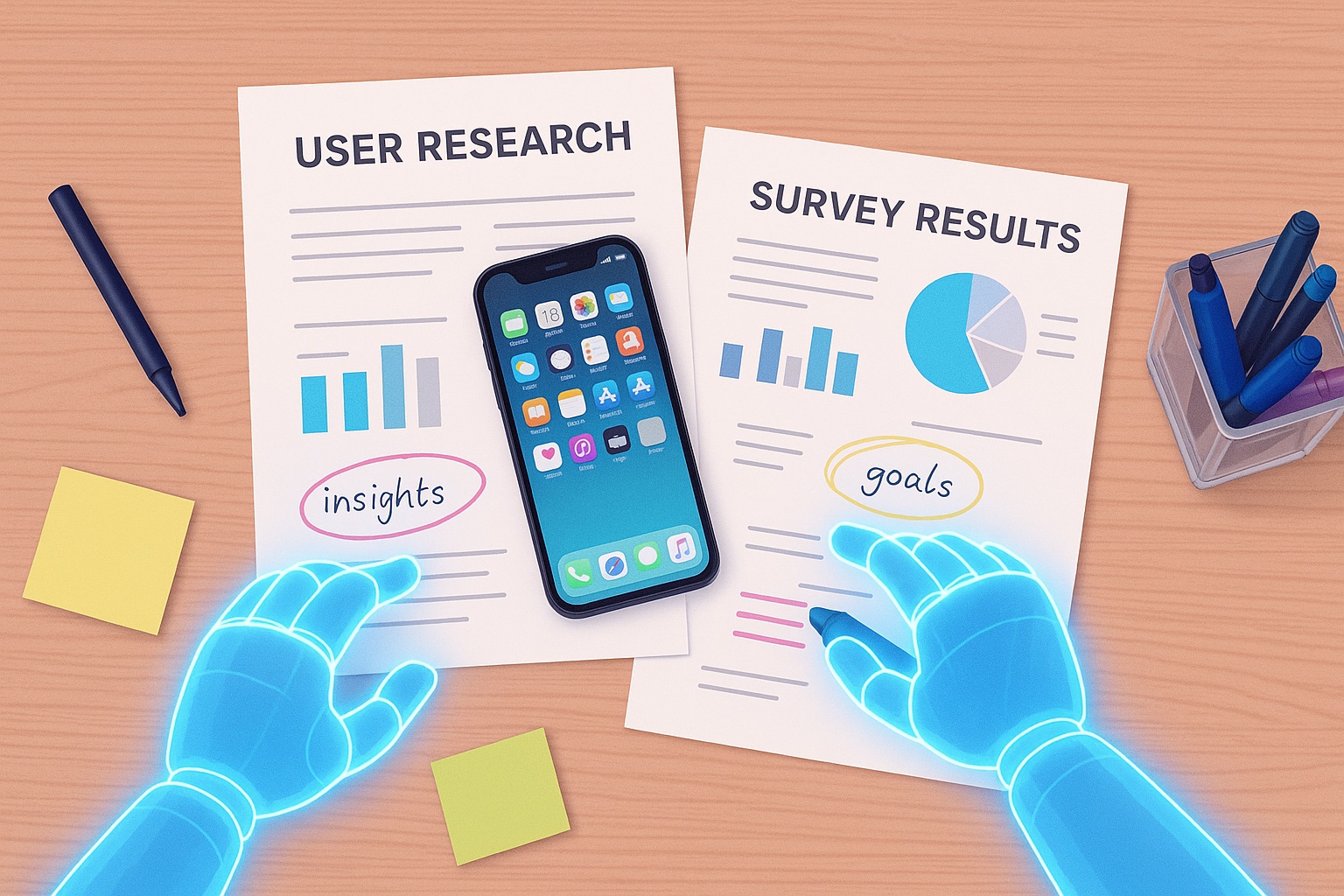From UX Researcher to AI-Augmented Insight Machine
How I transformed my research process with AI, shipped things faster, and still kept the human in the loop
TL;DR
- UX research has always been slow, tedious, and often a bottleneck.
- With AI tools (transcription, clustering, sentiment, summarization), I can now get through analysis & reporting in a fraction of the time.
- This allowed me to run more studies, iterate faster, and make decisions with higher confidence.
- But: there are risks (bias, loss of nuance, privacy), so human oversight, validation, and ethical guardrails are essential.
Before: Traditional UX Research Flow & Frustrations
- Manual interview transcription: long, tedious, error-prone.
- Coding qualitative data: tagging, clustering, affinity mapping takes days.
- Waiting for summaries: stakeholders need insights, but they often wait for polished reports.
- Low throughput: small sample sizes, rare opportunities to test lots of ideas.
- Risk: decisions made with incomplete info or gut feeling because full data wasn’t processed in time.
Enter AI: What Changed
AI didn’t replace the process, but it sped up and augmented almost every step.
- Transcription & speaker labeling became automatic. Tools like Whisper or Otter mean hours of typing are gone.
- Sentiment and emotion tagging highlight moments of frustration or delight that I might otherwise miss.
- Clustering and theme extraction make it possible to see patterns across dozens of responses in minutes, not days.
- Auto summaries and quote extraction provide stakeholder-friendly reports while the research is still ongoing.
- Survey design helpers can even suggest better questions or highlight bias before I send them out.
Real Examples from My Recent Projects
Project A: Testing a New Feature Flow
We needed to validate whether users understood a new product flow. Normally, I would spend two full days transcribing and coding interviews. With AI transcription and summarization, I had clean transcripts, themes, and highlight quotes within hours. Stakeholders got a deck the very next day instead of waiting a week.
Project B: Monthly Feedback Survey Analysis
A survey produced dozens of open-ended responses. Normally, sorting through them is exhausting. AI tools clustered the feedback, separated complaints from compliments, and surfaced recurring suggestions. I still reviewed everything manually, but the heavy lifting was automated. Report time: cut in half.
What I Had to Build / Learn
- Prompt templates for repeatable tasks like “summarize themes,” “extract frustration quotes,” or “compare positive vs negative mentions.”
- Data hygiene to make sure transcripts are accurate and domain-specific terms aren’t misinterpreted.
- Validation loops where I checked AI-generated themes against raw transcripts.
- Privacy & ethics in how participant data is handled and what goes into AI tools.
The Trade-Offs & What Remains Important
- Nuance is still human territory. Sarcasm, cultural context, unspoken hesitation — AI often misses those.
- Bias is real. AI tends to over-emphasize certain words or patterns. Human judgment keeps things balanced.
- Temptation to over-rely. It’s fast, but skipping manual review is risky.
- Tool fragility. If a platform changes or prices shift, your workflow needs adjustment.
Results: What I Gained
- Insight delivery went from days to hours.
- I can now run multiple small studies instead of one big one.
- Stakeholders get interim insights quickly, reducing back-and-forth.
- My decisions are better supported because I can process more data, not just a handful of interviews.
Looking Ahead: Where I’m Going Next
- Trying synthetic users or simulated interviews to explore flows before live testing.
- Integrating behavioural data with transcripts for a fuller picture.
- Building real-time feedback loops directly into products.
- Exploring tools that give transparency on how insights are generated — not just black-box summaries.
Key Lessons / What You Can Do If You’re Starting
- Start small: replace one tedious step, like transcription.
- Build prompt templates: consistent inputs yield better outputs.
- Keep humans in the loop for interpretation and ethics.
- Validate outputs against raw data.
- Set expectations with stakeholders about what’s AI-assisted vs human-analyzed.
TL;DR Revisited
AI doesn’t replace UX research — but it multiplies what one researcher (or small team) can do. Use it to speed up, iterate more, and deliver insights earlier. Guardrails, ethics, and human review aren’t optional.


